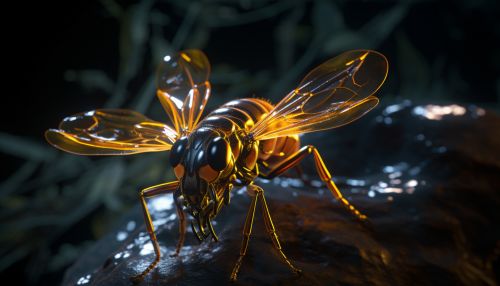Luciferin
Introduction
Luciferin is a generic term for the light-emitting compound found in organisms that generate bioluminescence. Luciferins are found in a wide array of organisms, including bacteria, dinoflagellates, fungi, various marine invertebrates, insects, and fish. They are substrates for enzymes called luciferase, which produce light through the process of oxidation.


Structure and Types
Luciferins vary in chemical structure; the most well-known is perhaps firefly luciferin. Firefly luciferin is used by fireflies to produce a yellow-green light. It is a heat-stable compound that is found in the cells of the firefly's light organ. When oxidized by the enzyme luciferase, it emits light.
Other types of luciferin include dinoflagellate luciferin, which is used by certain marine organisms to produce a blue-green light, and bacterial luciferin, which is used by certain bioluminescent bacteria to produce a blue light. The structure of these luciferins is different from that of firefly luciferin, but the basic mechanism of light production is the same.
Mechanism of Light Production
The production of light by luciferin is a complex process that involves several steps. First, luciferin is oxidized by the enzyme luciferase. This produces a highly reactive compound called an excited state luciferin. This compound is in a high-energy state and can release energy in the form of light when it returns to its ground state.
The exact mechanism of light production varies depending on the type of luciferin and luciferase involved. For example, in the case of firefly luciferin, the oxidation process involves the addition of oxygen to the luciferin molecule, followed by the removal of a molecule of water. This produces a highly reactive compound that can emit light when it returns to its ground state.
Applications
Luciferin and luciferase have a wide range of applications in scientific research. They are used in bioluminescence imaging to study the behavior of cells and tissues in living organisms. By introducing luciferin and luciferase into specific cells or tissues, researchers can track their behavior in real time.
Luciferin is also used in bioluminescent assays to measure the activity of various enzymes. By measuring the amount of light produced, researchers can determine the activity of the enzyme being studied.
In addition, luciferin and luciferase are used in environmental monitoring. For example, they can be used to detect the presence of certain pollutants in water. When these pollutants are present, they inhibit the activity of luciferase, resulting in a decrease in light production.
